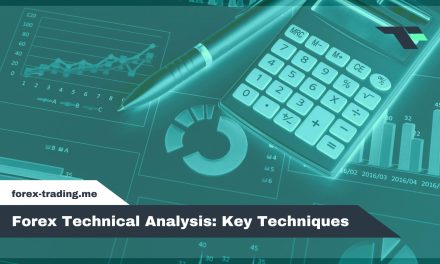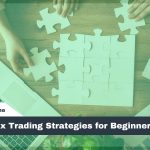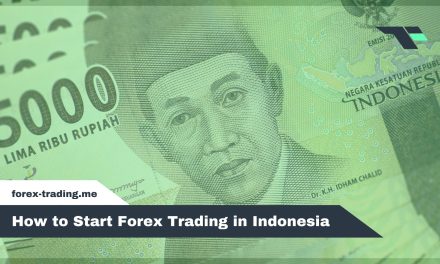
Top Forex Trading Strategies: A Comparison

Top forex trading strategies include trend following, which uses moving averages to identify sustained price movements, scalping for quick 5-10 pip profits within minutes, swing trading that targets 30-100 pip moves over days, carry trades that capitalize on interest rate differentials, and news trading based on economic data releases. Each strategy offers distinct risk-to-reward ratios and time commitments, with trend and swing trading achieving superior 2:1 or 3:1 ratios while requiring less screen time. Strategic selection depends on individual risk tolerance, available time, and market conditions for ideal results.
Table of Contents
Overview of Forex Trading Strategies
Forex trading strategies represent systematic approaches that traders use to make informed decisions about buying and selling currency pairs in the foreign exchange market, which processes over $6 trillion in daily transactions across more than 20 major currency pairs. These trading frameworks incorporate various forms of market analysis, risk management principles, and timing mechanisms to help participants navigate the complexities of currency fluctuations and market volatility. Comparing different strategic approaches becomes essential because each method carries distinct advantages and limitations that may align better with specific trader profiles, market conditions, and financial objectives.
What are Forex Trading Strategies?
When traders enter the world’s largest financial market, they must rely on systematic approaches known as trading strategies to guide their decision-making process. Forex trading strategies are structured methodologies that define when to enter and exit currency positions based on specific criteria and market analysis. These approaches fall into distinct categories, including trend-following strategies that capitalize on directional price movements, range-bound strategies that profit from sideways market conditions, and breakout strategies that target significant price movements beyond established support or resistance levels.
Traders typically choose strategies based on timeframes—scalpers hold positions for seconds to minutes, swing traders for days to weeks, and position traders for weeks to months. Each strategy type requires different analytical tools, risk management techniques, and psychological approaches to successfully navigate currency fluctuations.
Why Compare Effective Approaches?
How can traders determine which approach offers the best chance of success in an environment where market conditions shift constantly and individual circumstances vary dramatically? Comparing effective forex strategies provides essential clarity for this decision-making process. Each trading method carries distinct advantages and limitations that perform differently across varying market conditions, risk tolerances, and time commitments.
Studies indicate that only approximately 30% of retail forex traders achieve consistent profitability, highlighting the importance of selecting strategies that align with individual psychology and available resources. Through systematic strategy comparison, traders can evaluate performance metrics, implementation requirements, and compatibility with their specific goals. This assessment process enables more informed decisions about which approaches complement personal trading styles, ultimately improving the likelihood of sustainable success in the competitive forex marketplace.
Below is a concise comparison to help you quickly identify which strategic framework aligns with your goals, time horizon, and market outlook.
| Strategy Type | Timeframe | Key Advantages | Primary Tools | Ideal Conditions | Typical Risk Level |
|---|---|---|---|---|---|
| Trend-Following | Days to Months | Captures sustained directional moves; often higher reward-to-risk ratios | Moving averages, MACD, trendlines | Strong, uninterrupted market momentum | Moderate |
| Range-Bound | Hours to Days | Profits in choppy or sideways markets; fewer false breakouts | RSI, Bollinger Bands, support/resistance | Low volatility; defined support and resistance zones | Low to Moderate |
| Breakout | Minutes to Days | Targets sharp price moves; high volatility can yield quick gains | Volume indicators, price action, stop orders | Approaching major news events or technical levels | High |
Top Forex Trading Strategies Compared
Successful forex traders typically employ one of five primary trading strategies, each designed to capitalize on different market conditions and timeframes. These approaches range from rapid-fire scalping techniques that target minute price movements to longer-term carry trades that profit from interest rate differentials between currencies. Understanding the mechanics, requirements, and ideal market conditions for each strategy enables traders to select approaches that align with their risk tolerance, available time, and capital resources.
Trend Trading Strategy
While many traders attempt to predict market reversals, trend trading strategy focuses on identifying and following established price movements that can persist for weeks, months, or even years. This approach relies on technical indicators like moving averages and MACD to confirm market direction and momentum. Trend traders analyze price action patterns to enter positions aligned with the dominant movement, whether upward or downward.
The strategy works particularly well in forex markets driven by macroeconomic fundamentals, where currency pairs can maintain directional bias for extended periods. A notable signal is the “golden cross,” where the 50-day moving average crosses above the 200-day moving average, historically indicating sustained uptrends approximately 65% of the time over ten-year periods. Successful trend trading requires patience and disciplined adherence to momentum indicators.
Scalping Strategy
At the opposite end of the time spectrum from trend trading lies scalping strategy, an ultra-short-term approach that seeks to profit from minute price fluctuations within seconds or minutes. Professional scalpers typically target profits of 5–10 pips per trade, requiring exceptional execution speed and minimal bid-ask spreads.
| Scalping Requirements | Specifications |
|---|---|
| Typical Trade Duration | 30 seconds – 5 minutes |
| Profit Target | 5-10 pips per trade |
| Win Rate Needed | 50%+ to overcome spreads |
| Broker Type | ECN with low spreads |
| Essential Tools | Level II data, fast execution |
Success in scalping demands high-frequency execution capabilities and access to institutional-grade trading infrastructure. With EUR/USD averaging 1-pip spreads, scalpers must maintain consistent win rates exceeding 50% to remain profitable after transaction costs, making this strategy suitable only for experienced traders with adequate capitalization.
Swing Trading Strategy
Between the rapid-fire execution of scalping and the patience required for long-term trend following, swing trading occupies a strategic middle ground that appeals to traders seeking substantial price movements without constant market monitoring. This approach involves holding positions for several days, typically targeting 30–100 pip moves over 2–5 day periods. Swing traders rely on chart patterns, support and resistance levels, and technical oscillators to identify ideal entry and exit points during price swings.
The strategy’s effectiveness stems from capturing medium-term market momentum while avoiding the noise of shorter timeframes. Average win rates range between 45% and 55%, depending on disciplined risk management practices. Swing trading suits professionals with limited time for continuous market observation, as positions require periodic rather than constant attention, making it accessible for part-time traders.
Carry Trade Strategy
Many forex traders overlook one of the market’s most methodical profit mechanisms: the carry trade strategy, which captures returns by borrowing funds in a low-interest-rate currency and investing those proceeds in a higher-yielding currency. This approach profits from interest rate differentials between the funding currency and target currency, fundamentally earning income from central bank policy divergences. During stable market periods, carry trades have historically generated annualized returns of approximately 5–7%, making them attractive for yield-seeking investors. However, this strategy carries significant risks during market turbulence, when sudden volatility can trigger rapid unwinding of positions. A single week of financial turmoil can erase months of accumulated gains, with losses reaching up to 15% as funding currencies surge unexpectedly, demonstrating the critical importance of understanding yield curve dynamics.
News Trading Strategy
While carry trades capitalize on sustained interest rate differentials over extended periods, news trading strategy operates on the opposite end of the temporal spectrum, focusing on immediate market reactions to scheduled economic data releases and central bank announcements. This approach requires traders to position themselves before or immediately after high-impact events listed on economic calendars, capitalizing on rapid price movements that typically occur within minutes of publication.
Key characteristics of news trading include:
- Timing precision – Positions must be executed within narrow windows around data releases
- High volatility exposure – Currency pairs experience amplified price swings during news events
- Economic calendar dependency – Success relies heavily on understanding release schedules and market expectations
- Risk concentration – Seventy percent of post-release currency moves occur within the first five minutes
Practical Case Example
Consider a trend-following strategy executed on EUR/USD during February 2024, when the pair exhibited a sustained upward movement following dovish Federal Reserve commentary and strengthening European economic data. A trader identified the uptrend using moving average crossovers and entered a long position at 1.0850 with a 50-pip stop loss at 1.0800. The position utilized 10:1 leverage on a $10,000 account, risking 2% of capital per trade. Over two weeks, the pair climbed steadily to 1.0970, where the trader exited using a trailing stop mechanism. This 120-pip gain generated approximately $1,200 profit, representing a 6% return on the account balance. The example demonstrates how proper risk management, technical analysis, and market timing converge to create profitable trading opportunities in trending market conditions.
Visualizing these contrasting approaches side by side can clarify which best aligns with your goals, time commitment, and market outlook. The table below distills each strategy’s timeframe, potential returns, essential requirements, ideal conditions, and risk profile.
| Strategy | Timeframe | Potential Returns | Key Requirements | Ideal Market Conditions | Risk Profile |
|---|---|---|---|---|---|
| Trend Trading | Weeks to Months | Captures sustained moves; ~3–6% monthly | Moving averages, MACD, momentum analysis | Strong, macro-driven directional trends | Moderate – requires patience and can reverse if trend ends |
| Scalping | Seconds to Minutes | 5–10 pips per trade | ECN broker with low spreads, Level II data, fast execution | Peak liquidity sessions (e.g., London–NY overlap) | High – narrow spreads needed; execution and slippage risk |
| Swing Trading | 2–5 Days | 30–100 pip moves | Chart patterns, support/resistance, oscillators | Medium volatility with clear price swings | Moderate – requires disciplined risk management |
| Carry Trade | Weeks to Months | 5–7% annual from rate differentials | Understanding yield curves, funding and target currency research | Low-volatility environments | High in turbulence – sudden spikes can wipe out gains |
| News Trading | Minutes | Variable; rapid spikes possible | Economic calendar, precise timing, quick order execution | Immediately around high-impact announcements | Very High – extreme volatility and spread widening |
Pros and Cons of Effective Forex Trading Strategies
Each forex trading strategy presents distinct advantages and limitations that traders must carefully evaluate before implementation. Trend-following and swing trading methods typically offer more predictable risk-reward ratios but require patience, while scalping and news-based approaches can generate quick profits at the cost of increased stress and potential losses. Understanding these trade-offs, alongside proper risk management protocols and regulatory compliance requirements, enables traders to select strategies that align with their capital allocation goals and risk tolerance levels.
Pros of Trend and Swing Methods
The elegance of trend-following and swing trading strategies lies in their ability to capture substantial market movements while demanding considerably less time commitment than short-term approaches like scalping. These methods excel at identifying and riding momentum-driven price movements, allowing traders to benefit from the forex market’s natural tendency to establish directional trends across multiple timeframes.
Key advantages include:
- Superior risk-to-reward ratios – Trend strategies typically achieve 2:1 ratios while swing trading can reach 3:1 over multi-day setups
- Reduced screen time requirements – Positions held for days or weeks require less constant monitoring
- Enhanced automation potential – Longer timeframes allow for more reliable technical indicators and systematic approaches
- Lower transaction costs – Fewer trades mean reduced spread expenses and commission fees
These strategies particularly suit traders seeking sustainable, less stressful approaches to forex markets.
Risks in Scalping and News Trading
Speed becomes a double-edged sword in scalping and news trading strategies, where the pursuit of quick profits often collides with the harsh realities of market microstructure and execution costs. Scalpers face significant slippage issues when market liquidity thins, causing orders to fill at unfavorable prices. During major news releases, spreads can widen by up to 20–30 pips on major pairs, potentially wiping out scalper profits before trades even begin.
High-frequency strategies also burden traders with mounting commission costs that accumulate rapidly across numerous small trades. News trading pitfalls include spread shock, where brokers temporarily widen bid-ask spreads during volatile announcements. The emotional toll proves equally demanding, as constant monitoring and split-second decisions create psychological stress that often leads to impulsive mistakes and burnout.
Risk Management Basics per Strategy
Risk management fundamentals must adapt to match the specific demands and characteristics of each trading strategy, as a one-size-fits-all approach often leads to either excessive losses or missed opportunities.
Position sizing, stop-loss placement, and leverage management require careful calibration based on strategy timeframes and market conditions. Scalpers typically employ tighter controls due to frequent trades and shorter holding periods, while trend traders accommodate wider price swings with adjusted risk parameters.
- Scalping: Risk 0.5–1% per trade with tight stop-losses to manage high-frequency exposure
- Day Trading: Implement 1–2% risk per position with moderate stop-loss distances
- Swing Trading: Use 1.5–2% risk tolerance with wider stops for multi-day holds
- Position Trading: Apply 2–3% risk per trade, allowing substantial stops for long-term trends
Effective money management prevents catastrophic drawdowns while preserving capital for profitable opportunities across different market cycles.
Regulatory Risks to Consider
Although regulatory frameworks vary considerably across jurisdictions, traders must recognize that government policies can profoundly alter the effectiveness and viability of their chosen forex strategies. Leverage restrictions represent a primary concern, with the United States capping retail forex leverage at 50:1 for major currency pairs, while European Union regulations often impose even stricter 30:1 limits or lower for retail clients. These constraints can greatly impact high-frequency and scalping strategies that rely on amplified position sizes.
Capital controls and sudden margin requirement increases pose additional threats, potentially forcing position liquidation during unfavorable market conditions. Licensing requirements and broker regulation changes can limit platform access or alter trading costs. Traders should regularly monitor jurisdictional rules affecting their chosen strategies and maintain compliance with broker regulation standards to avoid disruptions.
Visualizing these trade-offs can help streamline your decision-making process by highlighting core benefits, drawbacks, and focal points for each strategy category:
| Category | Advantages | Limitations | Key Considerations |
|---|---|---|---|
| Trend & Swing Methods | 2:1–3:1 risk-reward ratios; reduced screen time; lower transaction costs | Requires patience during drawdowns; depends on sustained market trends | Confirm momentum with reliable indicators; automate signals where possible |
| Scalping & News Trading | Potential for quick, frequent profits; exploits minute price moves and news spikes | High slippage risk; spreads can widen 20–30 pips on news; commission costs accumulate; psychological stress | Ensure access to an ECN broker and fast execution; avoid major news if spreads exceed profit targets |
| Risk Management Across Strategies | Tailors position sizing to strategy timeframe; prevents catastrophic drawdowns | Overly tight stops can trigger premature exits; inconsistent application may erode gains | Scale risk: 0.5–1% for scalping, 1–2% for day trading, 1.5–2% for swing, 2–3% for position trading; adjust stops to match volatility |
| Regulatory Risks | Protects against excessive leverage losses; ensures long-term viability of trading plan | U.S. leverage capped at 50:1; EU often 30:1 or lower; capital controls and margin hikes can force liquidations | Monitor evolving broker rules; maintain sufficient margin to avoid forced exits |
How to Choose the Right Forex Trading Strategies
Selecting an appropriate forex trading strategy requires traders to assess their personal profile, including risk tolerance, available time, and financial goals, while considering whether they prefer technical analysis or fundamental analysis approaches. The choice also depends on the trading platforms and analytical tools available to the trader, as well as their psychological makeup and ability to maintain discipline under market pressure. Successful strategy selection involves thorough backtesting of potential approaches using historical data to validate performance before committing real capital to any trading method.
Matching Strategy to Trader Profile
Success in forex trading depends heavily on aligning chosen strategies with individual trader characteristics and circumstances. Risk tolerance, available time, capital size, and personality traits directly influence which approach will prove most suitable and sustainable.
Key factors for matching strategies to trader profiles include:
- Time availability – Full-time professionals often prefer swing or position strategies requiring only an hour of daily chart review
- Risk tolerance – Conservative traders gravitate toward position trading, while aggressive personalities may pursue scalping
- Capital requirements – Scalping demands larger accounts due to frequent transactions, whereas swing trading accommodates smaller balances
- Personality fit – Patient individuals excel at position trading, while those seeking immediate results prefer day trading approaches
Traders working conventional jobs typically find swing or position strategies more practical than intensive scalping methods requiring constant market monitoring.
Technical vs Fundamental Analysis
When traders evaluate forex strategies, they must understand the fundamental divide between technical and fundamental analysis approaches. Technical analysis relies on chart patterns, indicators like RSI and MACD, and historical price movements to predict future market direction. These indicators show approximately 50-55% accuracy in signaling reversals on 4-hour charts, making them useful but not infallible tools. Strategies such as scalping and trend following depend heavily on this technical framework.
Fundamental analysis, conversely, focuses on macroeconomic data including GDP, CPI, and central bank rate decisions to determine currency valuations. Carry trading and news-based strategies utilize this approach extensively. Many successful traders combine both methodologies, using fundamental analysis to identify long-term market direction while employing technical indicators for precise entry and exit timing.
Platforms and Tools Overview
Understanding market analysis methods represents only part of the forex trading equation, as the platform and tools traders use directly impact their ability to execute strategies effectively. MetaTrader platforms power over 80% of retail forex trades globally, offering extensive charting capabilities and automated trading features that suit most strategy types.
Essential platform considerations include:
- Execution speed – Scalpers require platforms with one-click trading and minimal latency
- Charting tools – Technical analysis demands advanced indicators and customizable timeframes
- Backtesting modules – Strategy validation needs historical data testing capabilities
- VPS hosting – Algorithmic traders often rent servers with sub-20ms latency for reliable execution
Broker selection becomes equally critical, as spreads, regulatory compliance, and data feed quality directly influence strategy performance. Traders should evaluate platforms like MT4/MT5, cTrader, and TradingView based on their specific strategic requirements and technical expertise levels.
Trading Psychology and Discipline
The psychology behind trading decisions often determines whether a technically sound strategy succeeds or fails in live market conditions. Up to 80% of trading losses stem from poor emotional control and failure to follow risk management rules, rather than flawed analytical approaches. Fear and greed frequently override logical decision-making, causing traders to abandon their predetermined plans during critical moments.
Successful forex traders develop strict discipline through consistent practice and adherence to well-defined trading rules. This includes setting stop-losses before entering positions, maintaining realistic profit targets, and avoiding the temptation to overtrade during volatile periods. Emotional control requires recognizing behavioral biases like confirmation bias and loss aversion, which can distort market perception. Mindset management techniques, including regular self-assessment and maintaining detailed trading journals, help traders identify patterns in their decision-making processes and improve long-term performance.
Importance of Backtesting Strategies
Validation through rigorous backtesting transforms theoretical trading strategies into measurable frameworks that traders can evaluate before committing real capital to live markets. Historical data analysis provides essential insights into how strategies might perform across different market conditions, helping traders identify potential weaknesses and optimize parameters before implementation.
Effective backtesting requires careful attention to several important components:
- Data Quality: Use at least 3-5 years of tick-level data to guarantee extensive market representation
- Performance Metrics: Analyze win rates, drawdowns, risk-adjusted returns, and consistency measures
- Walk-Forward Analysis: Test strategies on out-of-sample data to validate robustness
- Overfitting Awareness: Recognize that excessive optimization can create 20-30% performance disparities between backtests and live trading
Proper backtesting methodology helps traders develop realistic expectations and build confidence in their chosen approaches.
Selecting the optimal approach means aligning your unique profile, tools, and mindset with proven best practices. The following breakdown distills five critical dimensions into clear guidance, helping you match your trading goals with practical steps and key benchmarks:
| Consideration | Implementation Tips | Metrics & Examples |
|---|---|---|
| Matching Strategy to Profile | Align time availability, risk tolerance, capital size, and personality with suitable strategy types | Full-time traders often favor swing or position trades; scalping demands larger balances; patient traders excel in position methods |
| Technical vs Fundamental | Use technical indicators (RSI, MACD) for precise entries and fundamentals (GDP, CPI, rate decisions) for long-term direction | Technical signals yield ~50–55% accuracy on 4-hour charts; carry trades hinge on interest rate differentials |
| Platforms & Tools Overview | Choose platforms with one-click execution and low latency; prioritize charting, backtesting, and VPS support | MT4/MT5 power over 80% of retail volume; sub-20 ms VPS latency critical for algorithmic and scalping setups |
| Trading Psychology & Discipline | Establish strict rules: set stop-losses before entry, avoid overtrading, maintain a trading journal | Up to 80% of trading losses stem from emotional errors; journal tracking uncovers behavioral biases |
| Importance of Backtesting | Backtest on 3–5 years of tick-level data; perform walk-forward analysis; avoid overfitting | Over-optimized strategies can show 20–30% performance gaps between backtests and live results |
Unique Trends in Forex Trading Strategies
The modern forex landscape reflects significant structural changes that reshape how trading strategies perform and evolve. Market liquidity patterns have shifted as algorithmic and high-frequency trading systems now dominate over half of all spot FX transactions, while retail traders continue to face challenging profit margins with average win rates remaining near 30%. These developments create a stratified trading environment where algorithmic strategies increasingly influence price discovery, forcing traditional retail approaches to adapt or risk obsolescence.
Market Liquidity Trends
Liquidity fluctuations throughout the trading day create distinct opportunities and challenges that directly influence which forex strategies perform best during specific market sessions. Understanding these patterns enables traders to enhance their approach based on when markets offer the most favorable conditions for execution.
The London-New York overlap period demonstrates this principle clearly, generating over 40% of daily EUR/USD volume and driving average spreads below 0.5 pip. This enhanced liquidity environment particularly benefits strategies requiring frequent entries and exits.
Key liquidity considerations include:
- Session timing – Major overlaps provide ideal execution quality for scalping strategies
- Currency pair selection – Major pairs maintain tighter spreads during peak hours
- Volume patterns – Higher transaction volumes reduce slippage for large position sizes
- Spread variations – Bid-ask spreads narrow considerably during high-liquidity periods, improving profitability potential
Retail Profit Rate Trends
While favorable liquidity conditions create opportunities for strategy execution, retail trader profitability statistics reveal sobering realities about forex trading success rates across different approaches. Data consistently shows that over 70% of retail forex accounts lose money, with the percentage often climbing higher when examining longer time periods. Among traders who continue active participation beyond six months, only approximately 20-30% maintain profitability.
These figures vary considerably by strategy type, with scalping approaches typically showing lower success rates due to transaction costs and execution challenges, while longer-term trend-following strategies demonstrate marginally better outcomes. The high failure rate stems from factors including inadequate risk management, emotional decision-making, overleveraging, and unrealistic profit expectations that affect traders regardless of their chosen strategic approach.
Rise of Algorithmic Strategies
As algorithmic trading systems have gained prominence across global financial markets, their influence on forex trading has fundamentally altered how currency pairs move and respond to market events. Approximately 60% of spot FX transactions now originate from automated systems, creating a landscape where traditional manual approaches face increased competition from sophisticated quantitative models.
These algorithmic strategies operate with remarkable speed and precision, fundamentally changing market microstructure:
- High-frequency trading algorithms execute thousands of transactions per second, compressing profit margins for manual scalpers
- Automated systems respond to news events within milliseconds, often moving prices before human traders can react
- Machine learning models identify patterns across multiple timeframes simultaneously, creating more efficient price discovery
- Algorithmic execution reduces human error while maintaining consistent adherence to predetermined risk parameters
This technological evolution requires retail traders to adapt their strategies accordingly.
These structural shifts redefine how each strategy must adapt to remain viable. The table below distills the core trends, their impact on trading approaches, and critical takeaways for retail participants:
| Trend | Description | Impact on Strategies | Trader Considerations |
|---|---|---|---|
| Market Liquidity Fluctuations | London–New York overlap generates 40% of EUR/USD volume, driving spreads below 0.5 pip during peak hours | Scalping thrives on narrow spreads; trend and swing methods benefit from reduced slippage | Time trades to overlap sessions; prioritize major pairs for execution quality |
| Retail Profit Rate Decline | Over 70% of retail accounts lose money; only 20–30% remain profitable after six months | Scalpers face steep transaction costs; trend-following shows slightly better long-term outcomes | Emphasize rigorous risk management; set realistic profit targets |
| Algorithmic & HFT Dominance | Approximately 60% of spot FX volume originates from automated systems executing thousands of trades per second | Manual scalpers see compressed margins; news traders struggle as algos react in milliseconds | Integrate automation tools; focus on niches where human insight still adds value |
Conclusion and Next Steps for Forex Trading Strategies
Successful forex trading requires translating theoretical knowledge into practical action through systematic implementation and continuous refinement of chosen strategies. Traders benefit from following structured checklists that encompass demo testing, risk management protocols, and gradual capital deployment to bridge the gap between strategy selection and profitable execution. The shift from learning to earning depends on accessing quality educational resources, maintaining disciplined practice routines, and adapting strategies based on real market feedback and performance analytics.
Key Takeaways for Traders
When traders reach the end of their forex education journey, the complexity of choosing among numerous strategies can feel overwhelming, yet the fundamental principles remain remarkably straightforward. Successful strategy selection depends on matching personal characteristics with market conditions, rather than pursuing a universal solution.
Core lessons that traders should retain include:
- Risk tolerance determines time horizon – Conservative traders benefit from longer-term position strategies, while aggressive traders can handle scalping’s intensity
- Market conditions favor different approaches – Trending markets reward trend-following strategies, while ranging markets suit mean reversion techniques
- Technology enhances but doesn’t replace fundamentals – Automated systems require solid strategic foundations to perform effectively
- Practice precedes live trading – Demo accounts allow strategy testing without financial consequences, improving confidence and execution
Memory studies suggest readers retain up to 70% of strategic information when reviewing these summary points regularly.
Step-by-Step Trader Checklist
In selecting the right approach, it’s crucial to translate theory into actionable steps. The following checklist breaks down each stage— from goal-setting to live trading—into numbered tasks and sub-tasks, making it easy to track progress and stay disciplined as you build your trading plan.
Completing each step in this checklist lays a solid foundation for disciplined, data-driven trading. By rigorously testing strategies, adhering to risk rules, and monitoring performance, you’ll be well positioned to adapt as markets evolve and pursue consistent, long-term success.
Resources for Ongoing Improvement
Completing the structured checklist represents only the beginning of a trader’s development journey, as the forex market demands continuous learning and adaptation to remain competitive. Professional traders understand that sustained success requires access to quality educational materials and reliable testing environments.
Essential resources for ongoing improvement include:
- Demo trading platforms – Over 90% of professional traders utilize at least one demo account for strategy testing before committing live funds
- Economic calendars – Reputable sources provide real-time updates on market-moving events and data releases
- Advanced charting software – Leading platforms offer free historical tick data from multiple brokers for thorough backtesting
- Educational literature – Recommended books and courses deepen understanding of market psychology and technical analysis principles
These tools enable traders to refine their chosen strategies systematically while minimizing financial risk during the learning process.


















